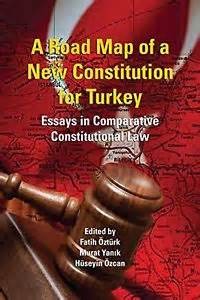|
Reviewed by Orçun Selçuk, Political Science Ph.D. Student, Florida International University Drafting of a new constitution in Turkey has been on the agenda of political parties, media, and civil society for a while. The idea of replacing the 1982 Constitution which was drafted by the military junta seems like a desirable goal for Turkey’s break away from its past and its eventual democratic consolidation. In spite of this general consensus on the need for a new constitution, there is no clear agreement on how to do it. In that sense, one expects the book A Road Map of a New Constitution for Turkey to fill that gap as its title suggests. The book is divided into six sections with a total of twenty-one chapters. The sections include constitution making, freedom of religion, ideology of constitution, judiciary, rights, and minority rights. The book does not have an introductory chapter which sets up the overall framework or the road map. This is the major weakness of the book as the chapters do not connect with each other and reads like separate essays in comparative constitutional law. The contributors of this volume provide various perspectives on the constitution-making process which might be relevant for the Turkish experience such as different approaches to secularism, the role of judicial review and the constitutional court. More specifically, the chapter on the relationship between religion and the state is very well written as it applies to the complex nature of religious freedom vs. freedom from religion in the context of the evolution of Turkish secularism. Also, the chapter on the so-called militant democracy in Turkey traditionally exercised by a pro-active constitutional court is very rich and policy-relevant. Regrettably, apart from these two chapters, the contributors do not directly address key issues in the Turkish context such as the presidential-parliamentary debate or the Kurdish peace process. There are some chapters in the volume which do not mention anything with regard to Turkey or just make a brief reference to the Turkish case at the introduction and conclusion. In other words, it seems that some of the authors in this volume lack the contextual knowledge about Turkey’s constitution-making process and instead decided to write on countries like Canada, Ireland, and the United States. These chapters diminish the quality of the book as the reader expects to draw lessons from those cases for a possible Turkish constitution-making process. The book ends with very bold claims about religious freedom under the Ottoman Empire as a model to be emulated for the treatment of religious minorities. It says, “It was actually the Ottoman state that introduced love and compassion to her subjects, and showed a wider tolerance to the people living under her rule without distinguishing them according to their ethnicity, nationality, or color” (p.362). Someone reading this passage might think that the classical liberalism emerged in the Ottoman Empire as it is described as the zenith of freedom for all. Overall, this twenty-one chapter volume does not provide a roadmap of a new constitution for Turkey. As various contributors implicitly argue, the book pushes for the adoption of a liberal constitution in Turkey which emphasizes individual rights and liberties as opposed to a state-centric constitution which limits these rights and liberties. However, it fails to acknowledge some hurdles which make this goal infeasible in the short run including the rising authoritarianism and the declining constitutionalism. Drafting of a new constitution matters if actors in the political system view the formal democratic rules as the only game in town. In recent years, we have witnessed overt violations of the current constitution by political actors who are only constrained by power politics. Normatively, the book argues for a new constitution in Turkey but it does not answer the questions how and under what conditions that will take place as the adoption of a new text would not change things overnight. Institutions matter but they do not operate in a vacuum. The book fails to account for the parameters to fill a gap in the literature. |


 A Road Map of a New Constitution for Turkey
A Road Map of a New Constitution for Turkey